Leiming Ma
FengWu: Pushing the Skillful Global Medium-range Weather Forecast beyond 10 Days Lead
Apr 06, 2023



Abstract:We present FengWu, an advanced data-driven global medium-range weather forecast system based on Artificial Intelligence (AI). Different from existing data-driven weather forecast methods, FengWu solves the medium-range forecast problem from a multi-modal and multi-task perspective. Specifically, a deep learning architecture equipped with model-specific encoder-decoders and cross-modal fusion Transformer is elaborately designed, which is learned under the supervision of an uncertainty loss to balance the optimization of different predictors in a region-adaptive manner. Besides this, a replay buffer mechanism is introduced to improve medium-range forecast performance. With 39-year data training based on the ERA5 reanalysis, FengWu is able to accurately reproduce the atmospheric dynamics and predict the future land and atmosphere states at 37 vertical levels on a 0.25{\deg} latitude-longitude resolution. Hindcasts of 6-hourly weather in 2018 based on ERA5 demonstrate that FengWu performs better than GraphCast in predicting 80\% of the 880 reported predictands, e.g., reducing the root mean square error (RMSE) of 10-day lead global z500 prediction from 733 to 651 $m^{2}/s^2$. In addition, the inference cost of each iteration is merely 600ms on NVIDIA Tesla A100 hardware. The results suggest that FengWu can significantly improve the forecast skill and extend the skillful global medium-range weather forecast out to 10.75 days lead (with ACC of z500 > 0.6) for the first time.
STAS: Adaptive Selecting Spatio-Temporal Deep Features for Improving Bias Correction on Precipitation
Apr 13, 2020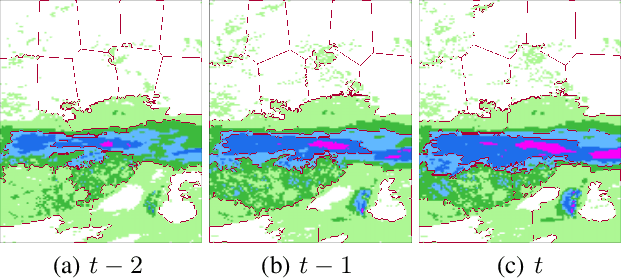
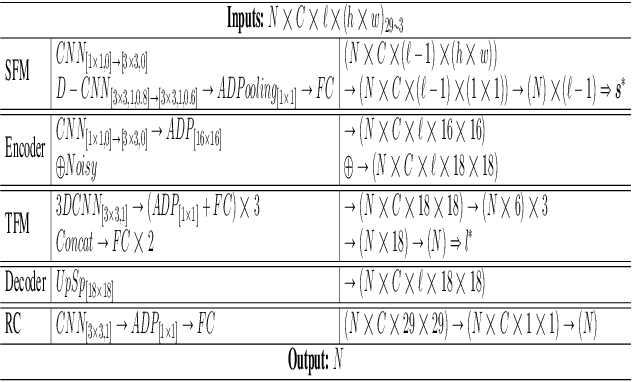
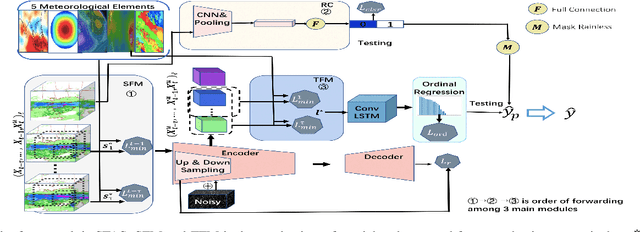
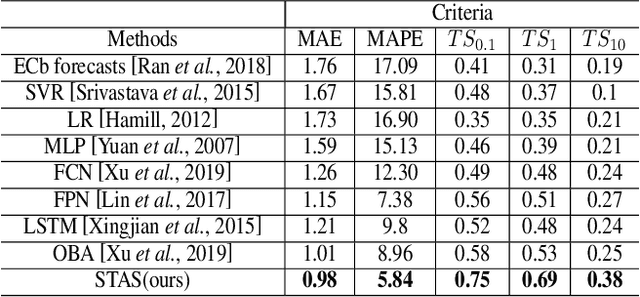
Abstract:Numerical Weather Prediction (NWP) can reduce human suffering by predicting disastrous precipitation in time. A commonly-used NWP in the world is the European Centre for medium-range weather forecasts (EC). However, it is necessary to correct EC forecast through Bias Correcting on Precipitation (BCoP) since we still have not fully understood the mechanism of precipitation, making EC often have some biases. The existing BCoPs suffers from limited prior data and the fixed Spatio-Temporal (ST) scale. We thus propose an end-to-end deep-learning BCoP model named Spatio-Temporal feature Auto-Selective (STAS) model to select optimal ST regularity from EC via the ST Feature-selective Mechanisms (SFM/TFM). Given different input features, these two mechanisms can automatically adjust the spatial and temporal scales for correcting. Experiments on an EC public dataset indicate that compared with 8 published BCoP methods, STAS shows state-of-the-art performance on several criteria of BCoP, named threat scores (TS). Further, ablation studies justify that the SFM/TFM indeed work well in boosting the performance of BCoP, especially on the heavy precipitation.
Towards a Precipitation Bias Corrector against Noise and Maldistribution
Oct 15, 2019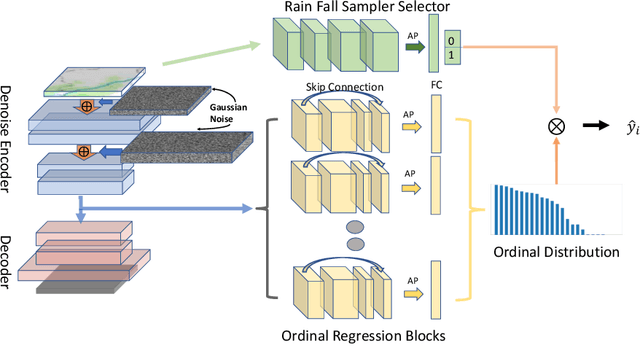
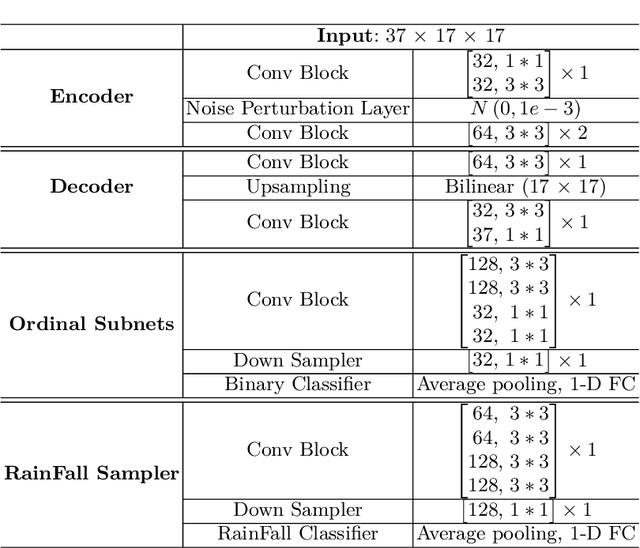
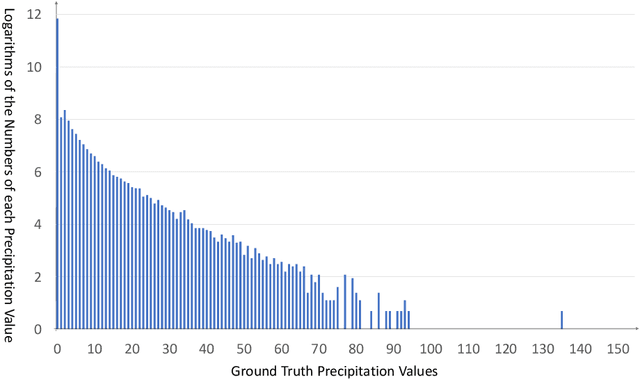

Abstract:With broad applications in various public services like aviation management and urban disaster warning, numerical precipitation prediction plays a crucial role in weather forecast. However, constrained by the limitation of observation and conventional meteorological models, the numerical precipitation predictions are often highly biased. To correct this bias, classical correction methods heavily depend on profound experts who have knowledge in aerodynamics, thermodynamics and meteorology. As precipitation can be influenced by countless factors, however, the performances of these expert-driven methods can drop drastically when some un-modeled factors change. To address this issue, this paper presents a data-driven deep learning model which mainly includes two blocks, i.e. a Denoising Autoencoder Block and an Ordinal Regression Block. To the best of our knowledge, it is the first expert-free models for bias correction. The proposed model can effectively correct the numerical precipitation prediction based on 37 basic meteorological data from European Centre for Medium-Range Weather Forecasts (ECMWF). Experiments indicate that compared with several classical machine learning algorithms and deep learning models, our method achieves the best correcting performance and meteorological index, namely the threat scores (TS), obtaining satisfactory visualization effect.
Video Prediction for Precipitation Nowcasting
Jul 18, 2019



Abstract:Video prediction, which aims to synthesize new consecutive frames subsequent to an existing video. However, its performance suffers from uncertainty of the future. As a potential weather application for video prediction, short time precipitation nowcasting is a more challenging task than other ones as its uncertainty is highly influenced by temperature, atmospheric, wind, humidity and such like. To address this issue, we propose a star-bridge neural network (StarBriNet). Specifically, we first construct a simple yet effective star-shape information bridge for RNN to transfer features across time-steps. We also propose a novel loss function designed for precipitaion nowcasting task. Furthermore, we utilize group normalization to refine the predictive performance of our network. Experiments in a Moving-Digital dataset and a weather predicting dataset demonstrate that our model outperforms the state-of-the-art algorithms for video prediction and precipitation nowcasting, achieving satisfied weather forecasting performance.
 Add to Chrome
Add to Chrome Add to Firefox
Add to Firefox Add to Edge
Add to Edge